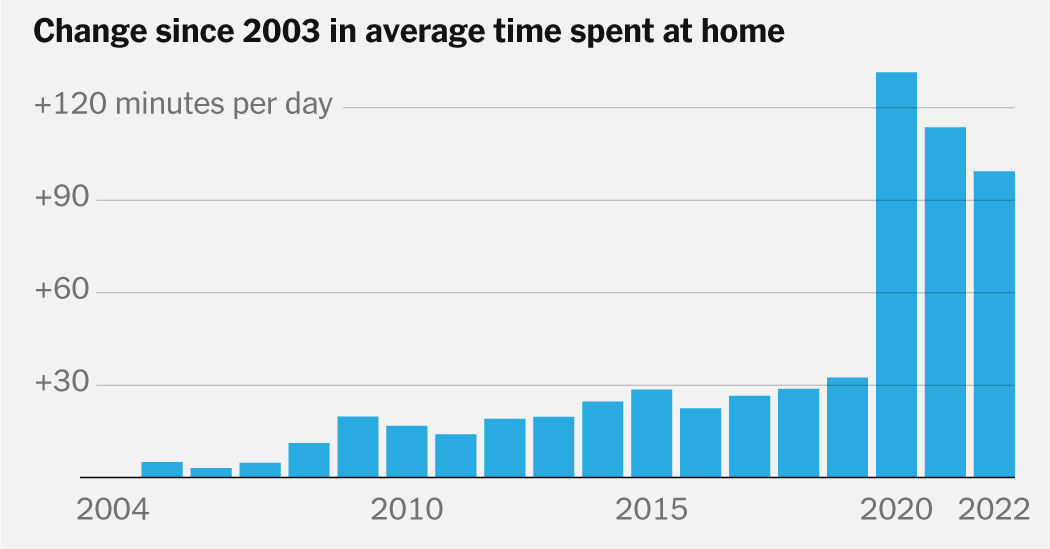

A recent study shows Americans are spending notably more time at home, a trend that started long before the pandemic.
It turns out we aren’t just bowling alone — we’re bowling at home.
A recent analysis of census data found that Americans are spending more time at home, and a large part of it alone. The analysis, based on responses to the American Time Use Survey, shows that time spent at home increased by 1 hour 39 minutes a day, or 10 percent, from 2003 through 2022. It’s a trend that rose sharply during the pandemic and had yet to return to more typical levels by 2022 — a sign that the pandemic may have hastened a cultural shift already in progress.
Years before the first stay-at-home orders were enacted, Americans were already beginning to spend more time at home. “It’s a dramatic shift in our daily lives,” said Patrick Sharkey, a professor of sociology and public affairs at Princeton, and the author of the study. “Almost every part of our lives is more likely to take place at home.”
The rise in working at home during the pandemic has been a big chunk of that, taking up 29 percent of all work activity in 2022. But even before then, from 2003 to 2019, the share of work time at home had crept up to 17 percent from 13 percent. Other activities followed a similar track — a gradual rise over years followed by a spike during the pandemic that was still felt sharply in the first two months of 2022.
As of 2022, time that Americans had once spent outside the home participating in activities like education, eating and drinking, had, to some extent, moved into the home. The largest shift occurred with religious activities: 59 percent occurred at home in 2022, up from 24 percent in 2003.
Average among U.S. adults
Source: Analysis of the U.S. Census Bureau’s American Time Use Survey by Patrick Sharkey, Princeton University
The New York Times
It’s a trend that the political scientist Robert D. Putnam examined in his influential 2000 book, “Bowling Alone: The Collapse and Revival of American Community,” which said Americans had traded their social institutions — churches, social clubs and, yes, bowling leagues — for social isolation, with adverse consequences for society.